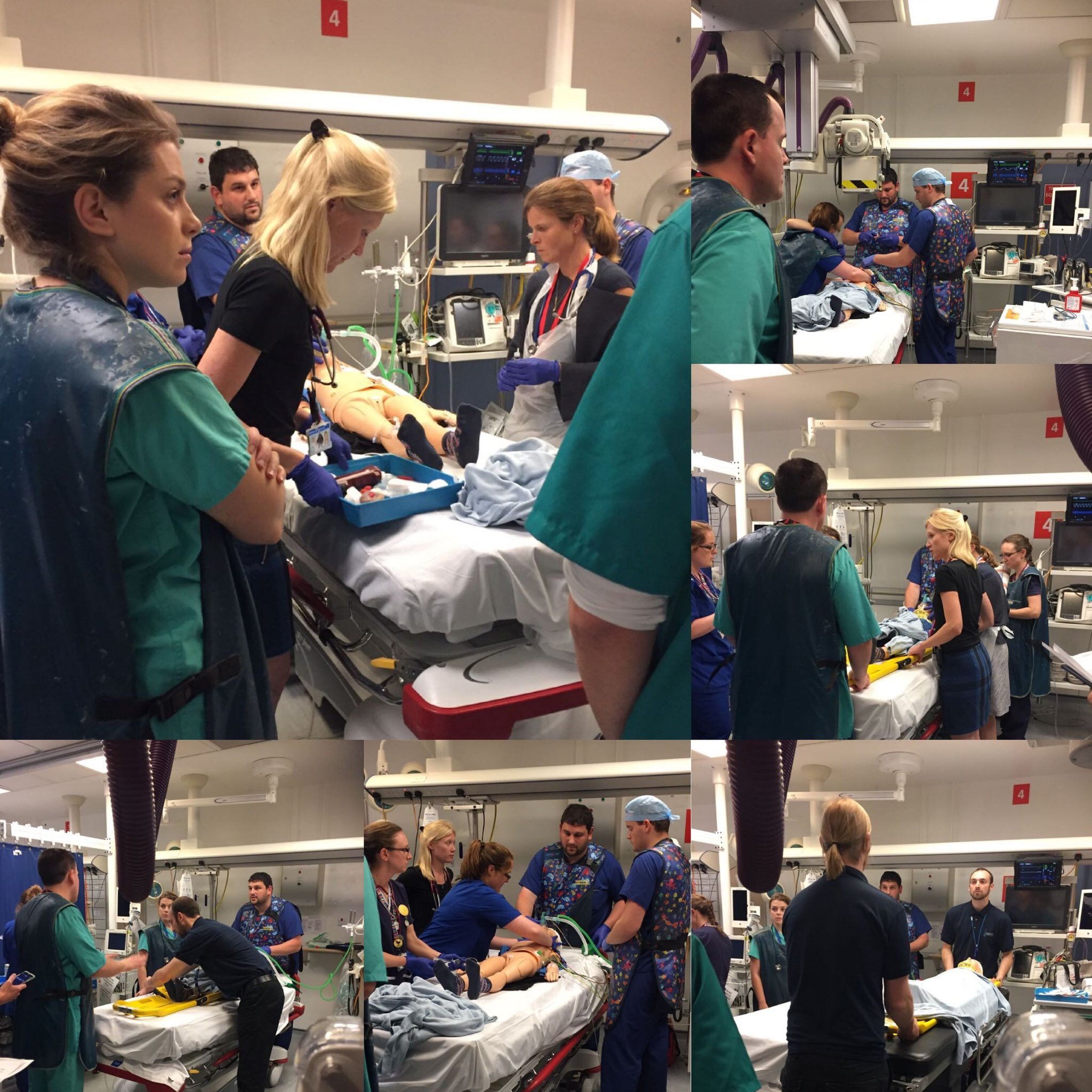After a 4m fall from a first floor window and landing on a broken glass bottle, Susannah, 5 years old, is rushed to hospital. The paramedics call ahead to John Radcliffe's Emergency Department while giving morphine to help settle our patient's initial distress. She arrives at hospital less responsive and with high flow oxygen keeping her saturation levels up, the team need to act fast.
|
The time is 10:38 Tuesday 22nd August 2017. The paramedics hand over to ED and the week of sim begins. A trauma call alerts staff to the incoming emergency, they have been briefed this a simulated patient but everything else, the staff, the equipment, the therapies and the location, are real. The trauma team assemble and allocate roles. Their first job is to stabilise Susannah and provide acute management of her condition. The team recognise their patient has multiple concerns including a limb threatening injury and signs pointing toward a Traumatic Brain Injury. Emergency therapies ensue shortly after, and the decision to transfer to CT before moving to Paediatric Intensive Care is made. |
 |
 |
CT scan confirms an acute traumatic brain injury. Our patient comes back to the simulated journey after her brain injury is decompressed in theatre. Monitoring of her intra-cranial pressure (ICP) has also been started and her treatment now focuses on the management of her raised ICP. Intubated and hand ventilated in ED, Susannah has now been transferred onto a ventilator with BiPAP. The team draw up and start administering treatments to help stabilise their patient. She remains stable for the rest of the day and through the night while the critical care team closely monitor her vitals with a plan for neuroprotection in place. The following day the ward round checks the neuroprotection parameters, discuss feeding and how to manage fluid balance. Discussion of neuroprotection becomes all the more critical after a spike in ICP at midday. Afterwards, she remains stable for the rest of the day. |
|
We are now in our patient's second day in Paediatric Intensive Care and her third day in hospital. The nursing team flag up an acute deterioration; Susannah's ICP is raised and right pupil appears dilated. Help is called for and the team at PICU respond urgently to Susannah's care. Ventilation is increased manually using a Water's bag for finer control, hypertonic saline is administered, vasopressors are increased. Susannah requires immediate transfer to CT scan. Radiology is informed and specialist theatre teams alerted. Concurrently the team prepare for the trip to CT by transferring her onto mobile equipment and ensuring they have suitable emergency kit should she deteriorate further on the transfer. Susannah is safely transferred to CT, her scan reveals the swelling in her brain has developed. Sadly, surgery can not help and our patient develops brain stem death overnight. The final tasks of discussing the outcome with the parents and managing the patient for BSD testing and conferring with the organ donation team, follow. However, the learning outcomes from this week long sim live on and, while the teams looking after Susannah did everything they could, the experience provides valuable insights into their processes and systems. By testing these using manikins improvements can be highlighted and implemented which will improve patient safety. |
 |


